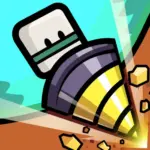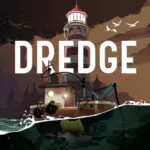Survival Island EVO Raft IPA casts you ashore with little more than grit and a view of endless blue. It’s a survival-crafting adventure where the rhythms of tide, weather, and wildlife set a challenging tempo, and your ingenuity sets the beat. Each sunrise demands decisions: what to gather, what to build, and when to risk the open water aboard a makeshift raft.
This article follows your journey from wreckage to command, charting a path through early-game scrambles, raft engineering, risk management, exploration, and long-term progression. With practical tips, compact tables, and a neutral eye on systems, it aims to help you transform panic into planning-and planning into mastery.

Shipwrecked Beginnings: Entering the World of Survival Island EVO Raft
The opening minutes are disorienting: salt-stung eyes, scattered debris, and the roar of the surf. Embrace the chaos by slowing down; the shoreline is both danger and opportunity. Driftwood glints in the foam, fibrous plants cling to dunes, and small critters rustle in the brush. Your first real resource is awareness-scan, mark, and memorize the contours of your starting cove.
Inventory space is tight, so think in triage. Prioritize hydration sources, basic tool materials, and anything that can become rope. Shells and bones are not trash; they’re early blades and hooks. The beach is a conveyor belt-new flotsam arrives with the tide-so return often rather than hoarding poorly.
By dusk, aim to have a reliable fire site, a crude blade, and a plan to sleep dry. Even without a full shelter, a windbreak of sticks can blunt the night chill. Keep a mental map of “day two” targets: a freshwater pocket inland, a cluster of palms for long-term fiber, and a safe path between them. Momentum tomorrow depends on restraint today.
Starter Gear Snapshot
| Item | Use | Found/Made |
|---|---|---|
| Stone Knife | Cutting, skinning | Stones + shard |
| Fiber Rope | Craft bindings | Palm fiber |
| Coconut Flask | Water carry | Coconut + rope |
| Torch | Light, deter | Stick + cloth |
- First 5-minute checklist: pockets of fresh water, driftwood piles, palm cluster, safe fire pit.
- Markables: odd rock formations, crab nests, tide line “loot lanes.”
Forage, Fabricate, Fortify: Your First Day Survival Loop
Survival is a loop-gather, craft, secure, repeat-and day one is its smallest circle. Foraging begins with the basics: sticks, stones, fiber. Use your first tool to multiply efficiency; a knife or hatchet doubles returns and unlocks recipes. Keep a rhythm: two minutes scanning, two minutes harvesting, one minute sorting, then rotate to a new zone to avoid spawns drying up.
Fabrication should target utility over comfort. A fire starter, a water solution, and a basic weapon top the list. Food is easier than water; don’t overhunt when coconuts, shellfish, and small game can bridge the gap. Reserve fiber for rope-so many tools hinge on it. If your crafting tree allows queues, batch items by shared materials to save time and backtracking.
Fortification doesn’t require four walls. Start with a fire ring, a drying rack for food and hides, and a stash zone above high tide. Consider a simple lean-to set slightly inland, oriented to block prevailing wind. Security is routine: quench embers safely, stash bait away from camp, and sleep with your main tool equipped.
Day-One Craft Priorities
- Craft order suggestion: Knife → Fire → Flask → Hatchet → Collector → Rack.
- Rule of three: one tool in hand, one crafting, one being repaired or replaced.
Wood, Rope, and Waves: Engineering a Seaworthy Raft
The raft is freedom embodied-but only if it floats straight and stores enough. Start with a stable base: wide before long. Two-by-three foundations beat a narrow plank when chop rises. Early steering is crude; compensate with symmetry and weight distribution. Keep heavy crates centered and low.
Materials matter. Softwood floats, hardwood frames; rope ties it all together. Upgrade joins to reduce flex and creak, which translate into efficiency loss over distance. Add-on components transform the raft from ferry to mobile base: a small sail for reach, a water barrel for journeys, and a toolbench for mid-sea fixes.
Design around maintenance. Mount repair kits in arm’s reach, keep a spare paddle lashed near the stern, and leave clear deck lanes to avoid snagging in tight maneuvers. If sharks or reefs are common, consider sacrificial bumpers: cheap planks you expect to lose.
Raft Module Cheat Sheet
- Build tips: width first, center mass, duplicate essentials.
- Test loop: launch light, circle the bay, adjust ballast, relaunch.
Enemies, Ecosystems, and Emergencies: Risk Management in the Wild
Islands breathe-and bite. Daytime brings foraging windows, but also territorial fauna. Boars charge, birds steal, and marine predators patrol channels. Combat is less about DPS and more about spacing, angles, and terrain: kiting around rocks, backing into shallow water where large predators stall, and using torches at dusk.
Weather and illness add a softer, deadlier pressure. Wet-cold drains stamina, heat saps hydration, and untreated wounds spiral. Plan for thresholds: carry cover for a sudden squall, keep a herbal kit for infections, and schedule shade breaks during scorchers. A well-timed nap can be worth more than a risky haul.
Emergencies are solved before they start. Cache rescue kits at known waypoints, keep a backup flask on the raft, and maintain a “last safe return” timer-when it dings, you head home, cargo or not. Risk pays only when it’s budgeted.
Threat Response Matrix
- Emergency kit: bandage, antiseptic herb, spare torch, ration, repair kit.
- Retreat rule: if two systems fail (health, water, tools), withdraw immediately.
Horizons Expand: Exploration, Quests, and Resource Routes
Once the raft hums, the map opens. Nearby islets offer specialized resources-iron-rich cliffs, fiber groves, rare fauna-and quest hooks that hint at deeper routes. Exploration shifts from wandering to logistics: outposts for staging, caches for turnover, and routes that sync with prevailing winds.
Quests act as both breadcrumb and training ground. Retrievals sharpen inventory management, escorts test steering under pressure, and construction contracts teach material economies. Accept tasks that align with your current bottlenecks; refuse those that overextend your tech tier.
Route planning is its own craft. Use triangle circuits: Farm A for fiber, B for ore, C for trade, then home. Keep a weather eye-literally-by aligning departures with clear windows and reserve fuel or paddling stamina for the final leg. Exploration should swell your larder, not drain it.
Simple Route Planner
- Navigation tips: mark stars at camp, track wind with a ribbon, log travel times.
- Cache rule: one crate per route leg, stashed above spray line.
From Castaway to Captain: Long-Term Progression and Playstyle Mastery
Long-term growth branches in three directions: tech, territory, and technique. Technology unlocks better tools, sturdier hulls, and efficient stations. Territory expands your footprint with satellite camps and trade posts. Technique refines habits: faster sorting, tighter repairs, cleaner fights.
Playstyles emerge as your kit matures. The Nomad runs light, living from crates and tide; the Engineer builds a floating workshop; the Warden fortifies a home island and sails only for rare hauls. None is “best”-each solves the archipelago differently. Try hybridizing to cover weaknesses.
Endgame is cadence. Runs feel like well-scored music-push during calm, pivot before storms, and maintain buffers for bad luck. Mastery isn’t about never being surprised, but about being surprised on your terms, with the tools to turn chaos into profit.
Build Archetypes
| Archetype | Core Upgrades | Strength |
|---|---|---|
| Nomad | Storage, sail | Speed, reach |
| Engineer | Workbench, anchor | On-site fixes |
| Warden | Base, farms | Economy, safety |
- Endgame goals: sustainable water and food loops, reinforced raft, mapped routes.
- Soft cap: time-to-repair vs. time-to-explore-optimize both.
Conclusion
Download Survival Island EVO Raft IPA For iOS thrives on the friction between scarcity and possibility. Every plank and palm fiber is a decision, every voyage a wager. The more you plan, the luckier you get-but the sea always has a say.
Whether you lean Nomad, Engineer, or Warden, the journey from shipwrecked to seaworthy is a satisfying ascent. Respect the loop, budget your risks, and let the horizon be your teacher. Captaincy, in the end, is a practiced calm in a world that never fully settles.







Leave a Comment